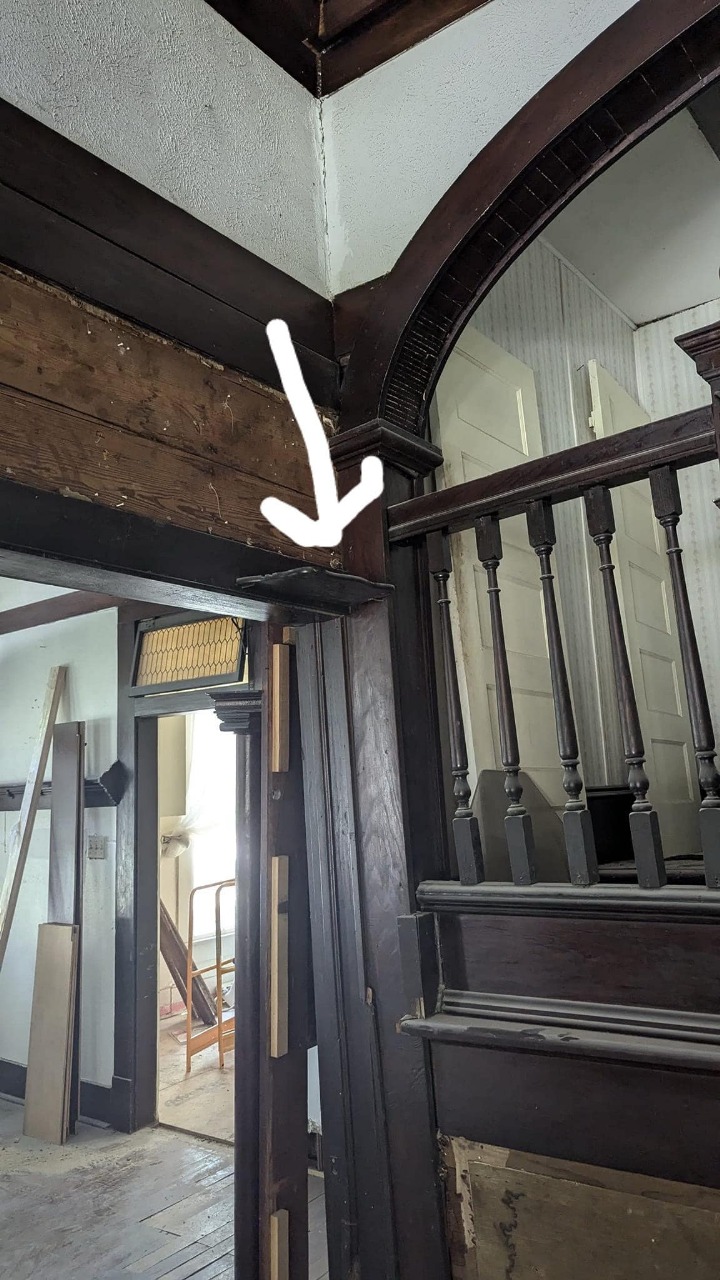ADVERTISEMENT
**1898: Any Ideas What This Shelf Was For?**
History is full of fascinating artifacts, many of which have left us puzzled for centuries. From mysterious objects to ancient tools, there’s always a sense of wonder and curiosity surrounding items that have outlasted their creators. One such mystery surfaced recently when Brenda Trott, an avid history enthusiast, shared an intriguing photo online with the simple question: “1898—any ideas what this shelf was for?” The image, featuring an old, vintage shelf with a unique design, quickly sparked debates and discussions among online communities, eager to speculate about its purpose.
As we dive into this mystery, we’ll explore the historical context of the year 1898, the design of the shelf, and some of the most plausible ideas for what this shelf could have been used for. Along the way, we’ll also examine the broader trends in interior design and furniture construction during that era and how seemingly simple objects can sometimes hold a world of history and meaning.
### The History of 1898: Context is Key
To fully appreciate the significance of an object like the one Brenda Trott shared, it’s essential to consider the historical context of the year 1898. The late 19th century was a period of great change, marked by rapid industrialization, technological advancements, and shifts in society. It was a time when Victorian ideals still held strong, but new trends and innovations were starting to make their way into everyday life.
In 1898, the world was witnessing the tail end of the Victorian era, which was characterized by ornate, elaborate designs and a focus on craftsmanship. People were still living in an era where hand-made furniture and intricate decorative pieces were commonplace. However, the Industrial Revolution had already begun to transform manufacturing processes, and mass-produced furniture started to make its way into homes across Europe and North America. Despite this, many people still preferred the hand-crafted, high-quality designs of earlier decades, especially for decorative pieces and furniture in prominent areas of the home.
Additionally, 1898 was a time of major social and political changes. The world was on the brink of the 20th century, and global tensions were beginning to rise. This was also the year that the Spanish-American War began, marking a significant turning point in American history. In the world of design, though, these global events had little impact on the daily lives of most people, who were more concerned with their homes, family life, and local communities.
### The Mysterious Shelf: An Object of Curiosity
Now, let’s turn our attention to the object that inspired Brenda Trott’s query—a vintage shelf from 1898. The shelf in question is a small, unassuming piece of furniture, but it has an unusual design that immediately raises questions. It has a unique shape and construction that doesn’t immediately suggest any obvious function. The materials used appear to be wood, and the shelf is built in a way that doesn’t quite match typical shelves or storage units from the time.
The photo of the shelf sparked many comments and ideas from online users. Some speculated that it was a decorative piece, while others believed it could have served a more functional purpose. Its size, shape, and the way it was mounted all seemed to suggest that it had a very specific role, but what exactly that role was remains unclear.
To understand what this shelf was likely used for, we need to explore some of the design trends of the late 19th century and look at how furniture was being used during that time.
### Shelving and Furniture Design in the Late 19th Century
Furniture design during the late Victorian era was often influenced by the broader trends in art and culture. The Victorian period was marked by an interest in elaborate, ornate designs that reflected the tastes and values of the upper classes. Furniture was often designed to be both functional and decorative, with intricate carvings, elaborate upholstery, and attention to detail.
The late 1800s also saw the rise of a movement known as the Arts and Crafts Movement. This movement, which emerged in reaction to the industrialization of furniture production, emphasized hand-crafted furniture and simple, functional designs. Many pieces from this era were designed with a focus on quality materials and craftsmanship, and they often featured practical, versatile uses.
As the 19th century drew to a close, more modern and minimalist design trends started to emerge, influenced by new technologies and the growing middle class. People’s tastes were shifting toward more streamlined, functional furniture pieces. However, the ornate and decorative designs of the Victorian era remained popular, particularly among those who could afford handcrafted pieces.
For Complete Cooking STEPS Please Head On Over To Next Page Or Open button (>) and don’t forget to SHARE with your Facebook friends
